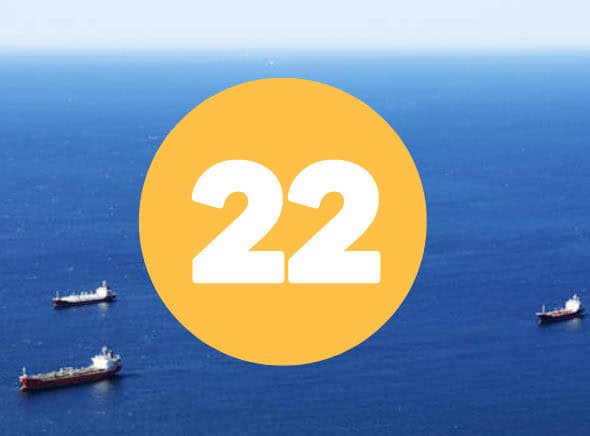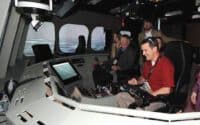22 Considerations when Upgrading Your IBS

If you’re thinking about giving your ship’s Integrated Bridge System (IBS) a tech facelift, you’ve probably realized it’s a bit like navigating through uncharted waters – exciting but a tad overwhelming. Upgrading your IBS is not just a tech decision; it’s an investment into the future of your maritime operations. But fret not! To help you sail through this process, we’ve put together “22 Considerations When Upgrading Your IBS” – your go-to guide for making this upgrade as smooth as calm seas. Let’s dive into the first five items to keep in mind:
* Please send feedback/suggestions to editor @ shipuniverse.com
- Compatibility Check: Thoroughly evaluate how the new IBS components will integrate with your existing navigation, communication, and operational systems. Look for compatibility in terms of data formats, connectivity options (like Ethernet or NMEA 2000 interfaces), and software integration. It’s essential that these systems work together seamlessly, ensuring a cohesive and efficient bridge environment.
- Regulatory Compliance: Scrutinize the new IBS against current maritime regulations such as the International Maritime Organization (IMO) standards, SOLAS (Safety of Life at Sea) requirements, and regional regulations that may apply to your operations. Confirm that the system supports necessary reporting protocols and data recording for compliance purposes, such as Voyage Data Recorder (VDR) integration and Automatic Identification System (AIS) compatibility.
- Budget Balancing: Break down the total cost of ownership of the new IBS, including upfront costs, installation fees, training expenses, and anticipated maintenance. Evaluate the cost against the expected operational life of the system. It’s important to also consider the potential cost savings from increased efficiency and reduced fuel consumption that a modern IBS may offer.
- Tech-Savvy Training: Plan a comprehensive training program that covers both the technical aspects of the new IBS and its practical application in maritime operations. This might include simulator training, hands-on sessions, and e-learning modules. Ensure that the training is tailored to various crew roles and proficiency levels, providing a smooth transition to the new system.
- Future-Proofing: Investigate the upgrade paths for the IBS. This includes checking the system’s capability to integrate future technology enhancements, compatibility with emerging navigation aids, and adaptability to new maritime operation standards. Assess if the system architecture is open and flexible enough to incorporate future advancements in maritime technology.
- Customization Capabilities: Examine the extent to which the IBS can be tailored to your vessel’s specific requirements. Can the interface be modified to suit your crew’s preferences? Look into whether the system allows for the addition of custom modules or features in the future, such as integration with new sensors or adaptability to different types of vessels.
- Integration with Existing Hardware: Assess the IBS’s compatibility with your ship’s current hardware setup. Does the vendor provide a detailed plan on how their system will integrate with your existing equipment, including communication and engine control systems? Consider the need for additional hardware and the potential impact on your vessel’s infrastructure.
- Ease of Use: Evaluate the user interface for intuitiveness and ease of navigation. Can the display settings and alerts be customized to prioritize critical information? Is the system designed to reduce the likelihood of human error, perhaps through clear visual indicators or alarms for crucial functions?
- Cybersecurity Measures: Scrutinize the cybersecurity features of the IBS. Does it include encrypted data transmission, firewalls, and intrusion detection systems? Inquire about the vendor’s track record in handling cyber threats and their process for regular security updates.
- Scalability for Future Expansion: Consider how the IBS can accommodate future growth. Can the system be easily upgraded with new features or expanded to handle additional vessels in your fleet? Look for an IBS that can adapt to evolving technologies without requiring a complete overhaul.
- Energy Efficiency: Evaluate the energy consumption of the IBS. How does it contribute to reducing the overall power usage of your vessel? Does the system include features that optimize operations for energy savings, such as efficient route planning that reduces fuel consumption?
- Compatibility with Emerging Navigation Technologies: Investigate how the new IBS system integrates with cutting-edge navigation technologies like Augmented Reality (AR) and Electronic Chart Display and Information Systems (ECDIS). For instance, check if the IBS can display AR overlays for improved situational awareness or seamlessly update digital charts.
- Advanced Automation Features: Evaluate the level of automation the new IBS provides. Does it offer features like automated route planning, where the system suggests the most efficient route based on current sea conditions, vessel speed, and fuel consumption? How about automated collision avoidance systems that can take action if a potential collision is detected?
- Remote Diagnostics and Support: Inquire about remote support capabilities. Can the IBS vendor provide remote diagnostics and troubleshooting? This feature is crucial for resolving issues quickly, especially when you are mid-voyage and direct physical support is not possible.
- Modular System Architecture: Consider the modular nature of the IBS. Can you upgrade individual components of the system without overhauling the entire setup? This modular approach allows for easier and cost-effective upgrades as new technologies emerge.
- Interfacing with Other Vessel Systems: Assess how the IBS interfaces with other critical systems on the vessel, like engine control and monitoring, communication systems, and safety systems. For example, does the IBS offer a seamless integration with the engine control room, allowing for real-time monitoring and control of engine parameters from the bridge?
- Enhanced Weather Forecasting Tools: Check if the new IBS offers advanced weather forecasting features. Does it integrate real-time weather data into its navigation systems, providing alerts for potential severe weather conditions? Look for systems that can suggest alternative routes or maneuvers to avoid bad weather, thereby ensuring safety and efficiency.
- Energy Management Systems Integration: Explore how the IBS interacts with energy management systems on board. Does it provide insights into fuel consumption patterns and offer suggestions for energy optimization? For example, the IBS should be able to analyze and recommend operational adjustments like optimal speed that balances timely arrival and fuel efficiency.
- Customizable User Interface and Displays: The usability of the IBS can be critical. Check if the new system offers customizable interfaces that can be tailored to the preferences and needs of your crew. This includes adjustable screen layouts, user-specific information displays, and easy-to-navigate menus, ensuring that critical information is always at the crew’s fingertips.
- Integration with Port and Shore Services: Does the IBS offer capabilities for integrating with port and shore-side services? This feature can be crucial for just-in-time arrival, berth scheduling, and efficient cargo handling operations. Look for systems that can communicate with port authorities and service providers for seamless onshore-offshore coordination.
- Backup and Redundancy Features: Assess the backup systems and redundancy features of the IBS. In case of a primary system failure, does the IBS automatically switch to a backup system without losing critical functionality? This includes redundant power supplies, duplicate hardware components, and fail-safe software systems to ensure continuous, safe operation under all conditions.
With these comprehensive considerations in hand, you’re well-equipped to navigate the complexities of upgrading your Integrated Bridge System. This journey is much more than a mere technical upgrade; it’s a strategic move towards enhancing operational efficiency, ensuring safety, and staying ahead in the rapidly evolving maritime industry. By meticulously evaluating each aspect, from compatibility and compliance to training and future-proofing, you’re setting your vessel on a course towards smoother, smarter, and more sustainable seas. Remember, a well-planned IBS upgrade is an investment in your vessel’s future, ensuring that you remain at the forefront of maritime excellence. Happy sailing!
Click here to find your Ideal IBS

Do you have a Maritime Product or Service that may be of interest to Shipowners? Tell us about it here!
Do you have feedback or insights? Please reach out to editor @ shipuniverse.com



